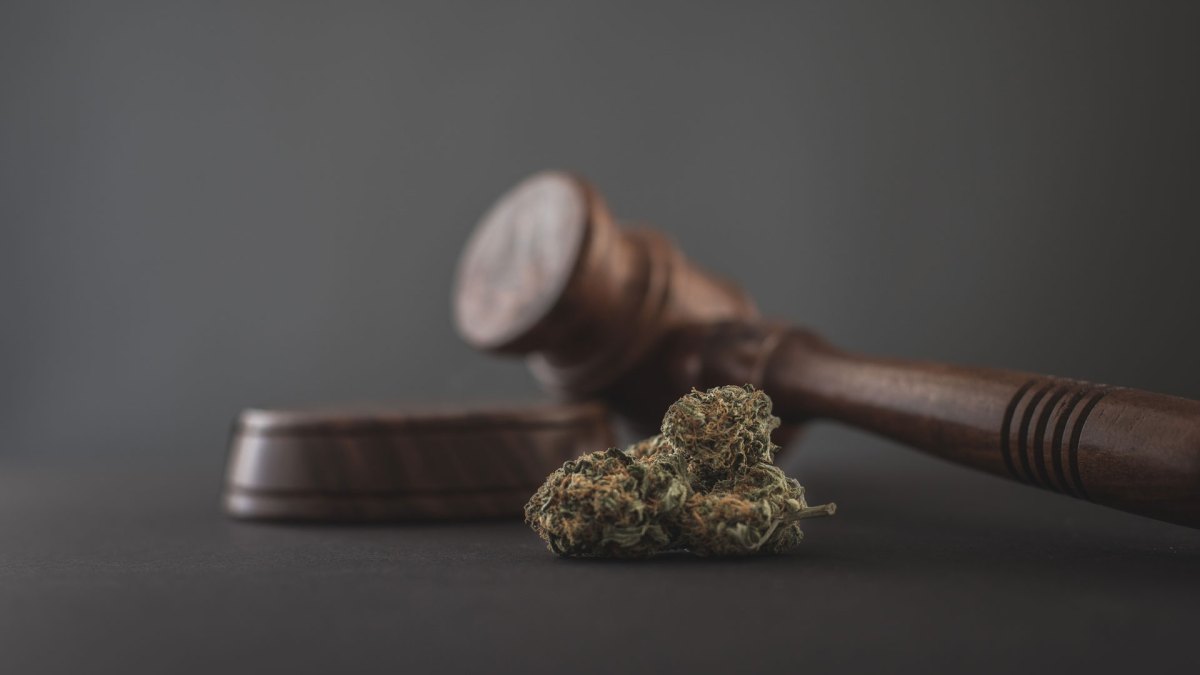For almost a century now, cannabis has been prohibited in Australia, and it’s the citizens who have paid the ultimate price. Today, cannabis legalization efforts are gaining traction worldwide, and Australians now realize what they have missed out on for the last 100 years (1).
- Four countries have legalized marijuana for recreational use and forty-two including Australia, have legalized it for medical use (1). But how did we get here? Was Cannabis prohibition a mistake or an accident?
- In this article, we attempt to shed more light on the history of cannabis prohibition in Australia.
Early Years – Where It All Began
- Australia was neither the first to ban cannabis, nor was it the first to plant it. The first record of cannabis in the country was in the 1770s when hemp seeds from the United Kingdom made their way to Australia at Sir Joseph Banks’ request aboard the First Fleet (2).
- The First Fleet comprised 11 ships transporting convicts from Portsmouth, England, to New South Wales, the penal colony that would become the first European Settlement in the country.
- Joseph Banks, an English naturalist and botanist, marked the hemp seeds as “for commerce,” hoping that the plant would be produced commercially in the colony.
- Historians believe that hemp cultivation was the main motive behind colonization. According to Dr. Jiggens, Australian historian and author of Sir Joseph Banks and the Question of Hemp, Britain’s colonization of New South Wales was never about finding a place to relocate convicts but to turn it into a hemp colony.
- Hemp was very important for maritime countries as it could be used for making cables, sails among other uses. With Joseph Banks’ help, cannabis was introduced in Australia, where it flourished and was widely used during the 19th century. The government encouraged hemp farming for the next 150 years by giving grants and land.
- Cannabis was used for both recreational and medicinal purposes. Cigars de joy (cannabis cigarettes) were sold over the counter well into the 20th century in Australia (3). These claimed to give immediate relief from asthma, shortness of breath, influenza, bronchitis, and cough.
Early 1900s – First Attempt at Prohibition
- Like most developed countries, the Australian cannabis prohibition journey began in the 1920s. This is when the domestic implementation of international drug control treaties set off the eventual cannabis prohibition in the Commonwealth.
- The first attempt at banning cannabis was in the 1912 International Opium Convention (4). Luckily, the United States attempt to include cannabis in the 1912 Convention signed at The Hague was unsuccessful. However, this wouldn’t be their last.
- The 1912 Convention’s primary objective was to control exports and restrict opium, heroin, cocaine, and morphine to medical uses only. It didn’t make drug use or cultivation illegal. Like others negotiated by the League of Nations, this Convention was normative rather than prohibitive.
- This led to the United States and China, who favored prohibitionist measures to withdraw from negotiations that led to the 1925 International Opium Convention signed in Geneva. (5)
1925 The Geneva Convention – Cannabis Prohibition in Australia
- Cannabis banning was inevitable. A revised International Convention relating to Dangerous drugs was signed at Geneva. This treaty was designed to outlaw the recreational use of opium and cocaine. However, Egypt made a last-minute request to include cannabis as “it was causing widespread insanity.” The motion was backed by Turkey and voted in despite opposition from India. (6)(7)
- While cannabis wasn’t a problem in Australia at the time, like other countries, it was not immune to the pressure to conform to those treaties. Furthermore, Australia was subjected to additional pressure from the British government, which represented its colonies and dominions in the international meetings and encouraged their compliance (3).
- As a result, Australia became the first country to succumb to the pressure. In 1926, it proscribed the import and export of cannabis. However, that wasn’t enough to make it illegal. To do this, it required local jurisdictions to begin legislating and implementing laws consistent with the Geneva convention.
- The country was also under pressure from the United States. In April 1938, Smith’s Weekly, an Australian newspaper, published an article titled ‘New Drug That Maddens Victims’ and subtitled ‘Warning from America.’ The article also informed the readers of the plant’s local availability (14)
- This article marked the beginning of American-inspired ‘Reefer Madness’ style campaigns, including the outrageous claims that it was “a Mexican drug that leads men and women to the wildest sexual excesses.” The article also introduced the word marijuana to Australia in an attempt to change the public’s perception of cannabis. (14)
- The states’ response was inevitable but was slowed down by the lack of a drug problem. Some jurisdictions didn’t see the problem as the prohibition model was applied with little research into how cannabis was used in Australia. (8). This meant that most laws enacted during that time were related only to opium.
- However, with pressure from the UK, local jurisdictions started implementing laws related to cannabis. (2) Victoria was the first state to enact legislation outlawing cannabis in 1928, with other states slowly catching up over the next three decades. Cannabis cultivation for personal use remained legal in Western Australia until 1950 and in Tasmania until 1959.
- Although the Commonwealth had in 1956 acted to introduce total cannabis prohibition, its use and cultivation remained uncommon, with the first illegal crop being reported as late as 1957. (8) This, however, changed dramatically in the 1960s.
The 1960’s – Weed Raiders and the Dramatic Rise of Cannabis Use
- It wasn’t until it was banned that cannabis became the most used drug in Australia. The ’60s generally saw an increase in the use of mind-altering drugs, including cannabis, mainly by those opposed to the Vietnam War (2).
- This led to more states gradually favoring the prohibitionist approach like in the US, with right-wing politicians like Robert Askin – New South Wales premier calling for crackdowns.
- Although its recreational use had been banned decades earlier, it became widespread after it was introduced in Sydney’s hippie culture by US servicemen in respite from the Vietnam War in the mid-late ’60s. (6)
- The discovery of about 30 square kilometers of marijuana infestation in the Hunter Valley ensured sufficient supply to satisfy the country’s demand. Bands of weed enthusiasts, later known as ‘Weed Raiders’ harvested the plants evading landowners and police. Much of the cannabis was smuggled to Sydney, where it was cured and illegally distributed. (9)
- The eradication of the marijuana infestation took more than nine years.
- The authorities reacted to this increase by trying to prosecute users. As a result, arrests rose by 1000% between 1966 and 1969, with the penalties also increasing.
Australia War on Drugs
- Australia had a few notable events to curb drug use. In 1973, NSW premier Robert Askin allowed police to attempt arresting anyone smoking cannabis publicly at the Aquarius Festival in Nimbin NSW. This led to a riot of more than 6000 people.
- In Queensland, police raided the Cedar Bar commune in an overwhelming show of force – a boat, helicopters, and four-wheel drives, for tiny portions of cannabis. The officers went as far as burning down houses and blowing up water tanks. Premier Joh Bjelke Peterson defended the police action as “tough on drugs.”
The 1970s The Beginning of the End
- By 1970, all the states had enacted laws that separated drug use or possession offenses from drug supply offenses (10). In the late ’70s, reduced penalties for cannabis use were advocated for as arrests rose. Most advocated for the introduction of fines for possession offenses, while others advocated for the removal of all penalties. (11)
- In 1985, a National Campaign Against Drug Abuse (NCADA) resulted from a meeting between the Prime Minister and all state premiers, adopted a mixture of prohibition and harm reduction policies in dealing with drug use, including cannabis.
- This opened the way for South Australia to decriminalize minor cannabis offenses in 1987 and ACT in 1992 (6). In 2000, NSW introduced a cannabis cautioning scheme where police can issue a cannabis caution to adults found in possession of up to 15 grams.
- In 2016, the Australian parliament passed new national laws legalizing medical cannabis products. Under the new federal scheme, patients with valid prescriptions can possess and use legally manufactured cannabis. (12)
- Interestingly, one in five US residents lives in a jurisdiction with fully legal marijuana (13), although the country was the main architect and driving force behind global cannabis prohibition.
References
1. Legality of Cannabis Wikipedia https://en.wikipedia.org/wiki/Legality_of_cannabis
2. Cannabis in Australia Wikipedia https://en.wikipedia.org/wiki/Cannabis_in_Australia#Early_history
3. Cannabis in Context, History, Laws and International Treaties chapter3 Druglibrary.org https://www.druglibrary.org/schaffer/Library/studies/aus/can_ch3_5.htm
4. International Opium Convention Wikipedia https://en.wikipedia.org/wiki/International_Opium_Convention
5. The UN Drug Control Conventions Transnational Institute https://www.tni.org/en/publication/the-un-drug-control-conventions#box1
6. The History of Recreational Cannabis in Australia Sydney Criminal Lawyers https://www.sydneycriminallawyers.com.au/blog/the-history-of-recreational-cannabis-in-australia/
7. The War On Drugs: How Egypt was the First Country To Lead the Charge and the Last to Back Down Cairo Scene https://cairoscene.com/In-Depth/The-War-On-Drugs-How-Egypt-Was-The-First-Country-To-Lead-The-Charge-And-The-Last-To-Back-Down
8. Cannabis: The Contemporary Debate Parliamentary Library Research https://www.parliament.nsw.gov.au/researchpapers/Documents/cannabis-the-contemporary-debate-vol-1–text/Cannabis.pdf
9. Hunter Valley cannabis infestation Wikipedia https://en.wikipedia.org/wiki/Hunter_Valley_cannabis_infestation
10. A brief history of Australian drug laws Unharm.org https://www.unharm.org/a_brief_history
11. What does the history of Australian cannabis policy suggest about its likely future shape? Academia.edu https://www.academia.edu/2867399/What_does_the_history_of_Australian_cannabis_policy_suggest_about_its_likely_future_shape
12. Medical marijuana is now legal in Australia Business Insider, Australia https://www.businessinsider.com.au/medical-marijuana-is-now-legal-in-australia-2016-2
13. 1 in 5 Americans now has access to fully legal marijuana Business Insider, Australia https://www.businessinsider.com.au/marijuana-in-america-20-of-americans-can-now-access-legal-weed-2016-11?r=US&IR=T
14. The Origins of Marijuana Prohibition in Australia Dr Jiggens https://www.drjiggens.com/wordpress/the-origins-of-marijuana-prohibition-in-australia/


